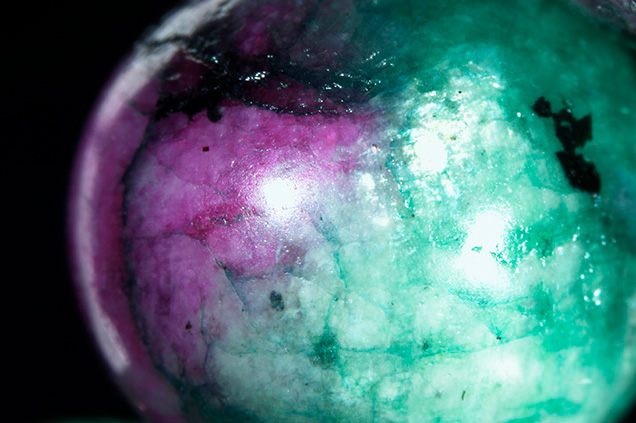Dyed Quartzite Imitation of Ruby-in-Zoisite

The New York laboratory recently received a bracelet composed of translucent multicolored beads that closely resembled ruby-in-zoisite. Standard gemological testing of one of the round beads (measuring 8.33 × 8.17 mm) revealed an refractive index (RI) of 1.55 for both the purple and green areas (instead of approximately 1.76 or 1.69 for ruby and zoisite, respectively) and very weak red to inert fluorescence in long-wave and short-wave ultraviolet light, respectively. Microscopic observation revealed fissures and a translucent aggregated/grainy structure, both of which contained green to dark green and pinkish purple to dark purple dye concentrations (figure 1).
Although most of the translucent green and purple aggregate material we encounter for identification is ruby-in-zoisite, the gemological features of this bead were inconsistent with our expectations. Raman spectra were collected to confirm the identity. Spectra from both the purple and green areas matched quartz (figure 2). Since the material was an aggregate, we concluded that it was dyed quartzite.

The Lab Notes section has documented many cases of dyed quartzite imitating jadeite, ruby, lapis lazuli, and sugilite (Spring 1986, pp. 49–50; Summer 1991, pp. 122–123; Summer 1995, pp. 125–126; Summer 1998, pp. 131–132; Spring 2001, pp. 62–63; and Fall 2003, pp. 219–220). But this is the first example we have seen of quartzite being used to imitate ruby-in-zoisite. This dyed quartzite provides an intriguing example for consumers to be aware of when purchasing ruby-in-zoisite.
.jpg)


